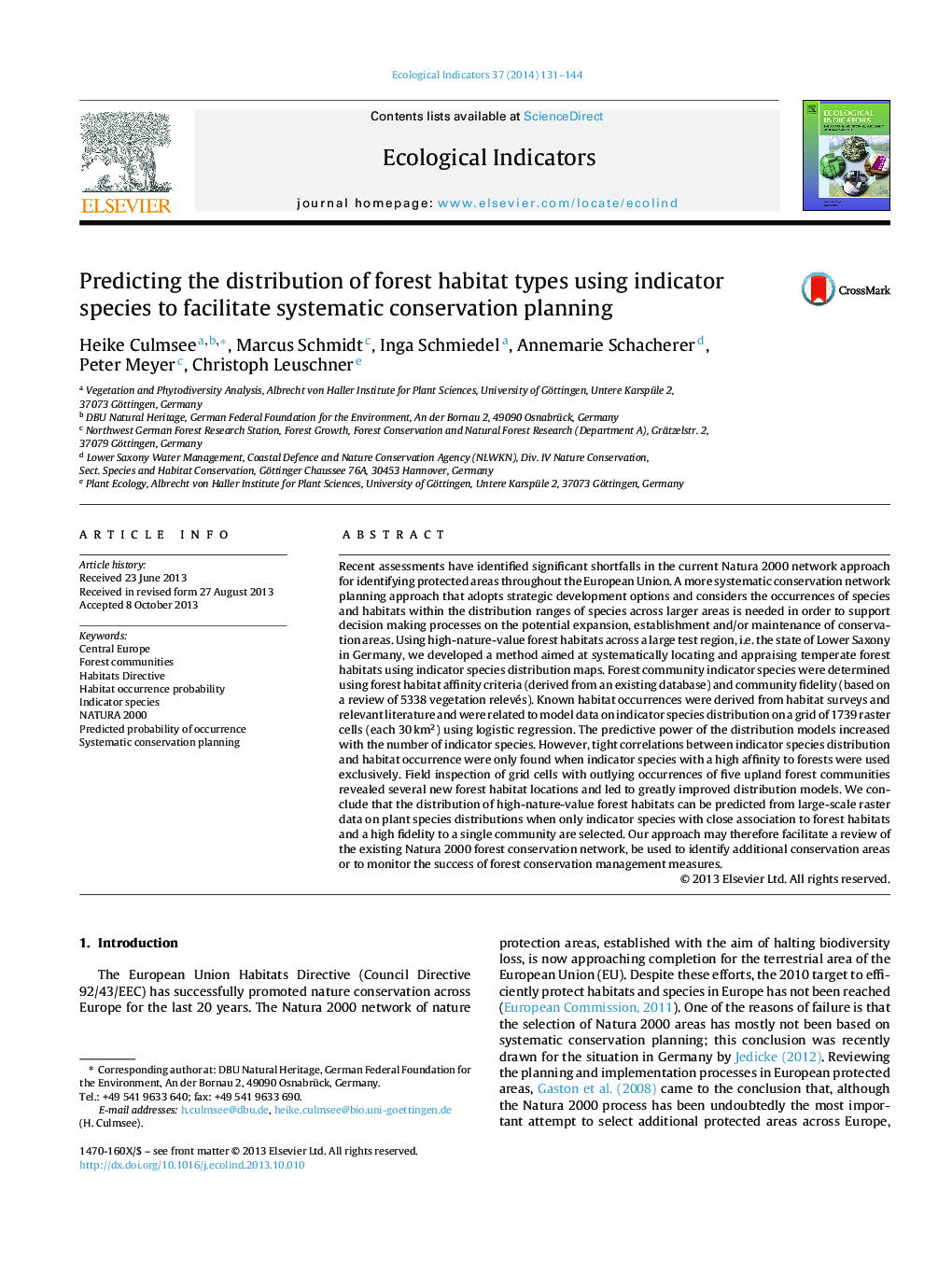| Article ID | Journal | Published Year | Pages | File Type |
|---|---|---|---|---|
| 4373258 | Ecological Indicators | 2014 | 14 Pages |
Recent assessments have identified significant shortfalls in the current Natura 2000 network approach for identifying protected areas throughout the European Union. A more systematic conservation network planning approach that adopts strategic development options and considers the occurrences of species and habitats within the distribution ranges of species across larger areas is needed in order to support decision making processes on the potential expansion, establishment and/or maintenance of conservation areas. Using high-nature-value forest habitats across a large test region, i.e. the state of Lower Saxony in Germany, we developed a method aimed at systematically locating and appraising temperate forest habitats using indicator species distribution maps. Forest community indicator species were determined using forest habitat affinity criteria (derived from an existing database) and community fidelity (based on a review of 5338 vegetation relevés). Known habitat occurrences were derived from habitat surveys and relevant literature and were related to model data on indicator species distribution on a grid of 1739 raster cells (each 30 km2) using logistic regression. The predictive power of the distribution models increased with the number of indicator species. However, tight correlations between indicator species distribution and habitat occurrence were only found when indicator species with a high affinity to forests were used exclusively. Field inspection of grid cells with outlying occurrences of five upland forest communities revealed several new forest habitat locations and led to greatly improved distribution models. We conclude that the distribution of high-nature-value forest habitats can be predicted from large-scale raster data on plant species distributions when only indicator species with close association to forest habitats and a high fidelity to a single community are selected. Our approach may therefore facilitate a review of the existing Natura 2000 forest conservation network, be used to identify additional conservation areas or to monitor the success of forest conservation management measures.
